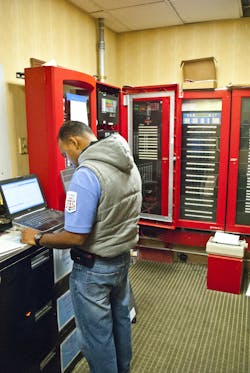Fire & Life Safety: Streamlining Fire Plans
Before beginning a fire alarm system installation in a commercial building, a permit must be secured — in the majority of states from the local Building Department. Before the building department will permit the installation, Fire Alarm Submittal documents must be provided so it can review the plans to make sure all adopted ordinances will be met.
This submittal package preparation is best left to a professional experienced in providing all that is required —it is not usually done by the alarm company installing the system. This person could be an architect, engineer or, in some states, a qualified technician who holds a Level III or Level IV NICET Fire Alarm Certification.
Other states may have more or less stringent requirements regarding who is allowed to prepare and submit the drawings and documentation required by the adopted Building Code (907.1).
Regardless, the person preparing the drawings needs the fire alarm installing company to provide them with complete and accurate system and equipment information in order for the approval process to move along smoothly and in a timely manner. The accuracy, and equally important the completeness, of the information you provide the plan preparer at the beginning of the process, will lead to the best possible outcome. If your permit application is not complete, it could lead to delays and revisions, which cost time, money and uncomplimentary remarks from your customers — all of which could significantly hurt your company’s reputation.
The fee you have to pay this experienced, qualified person to prepare the submittals is more than offset by the money and time you save by not having to provide revisions because critical information was not included with the initial application.
Supplemental Technologies and Inclusions
Besides the prescriptive requirements, based on the number and type of occupants for a building or space, there are many other stakeholders that may need to provide additional criteria that must be included in the fire alarm system. As the alarm company that sold the job to the customer, you may be aware of all or some of these; however, once you get the job and need the submittals prepared, you have to convey all this information to the designer or registered professional you hire to put the submittal package together.
The requirements from these types of stakeholders will be supplemental to the statutory requirements set forth in the adopted building/fire codes. Supplementary equipment and/or features are required to be indicated as such on the plans submitted for review.
Some of these other stakeholders might include an architect who wants the keypad or horns a certain color; or, an insurance company that imposes more stringent requirements than the Building Code — in order for their customer to pay a lower premium based on the loss potential in the event of a fire for a certain type of business operation. Many nursing homes and hotels must meet their own industry’s accreditation criteria by providing their buildings with more than the minimum fire alarm system requirements.
Some institutions require that the building fire alarm system meet requirements of the Life Safety Code, even if NFPA 101 has not been adopted statewide. Other governmental agencies, like the Department of Defense and Department of Corrections, will require additional fire protection in their buildings. These are just some of the more common stakeholders you could run across.
Design and Installation Requirements
Additionally, there may be conditions of the contract that stipulate how the owner — another AHJ — wants the fire alarm system to network and operate in conjunction with their other building systems; as well as how the system will be installed in conjunction with other building systems being installed.
The system designer, in order to do their job efficiently, must be made aware of all these requirements, and be provided with contact information for all these stakeholders, should questions arise during the plan preparation process.
There is information that can be provided on the plans that will help the plan reviewer immensely, and naming the occupancy classification of the building or space is just the beginning. For example, if the project uses horns and strobes, then it should be stated that Public Mode audible notification will be provided in compliance with Building Code section 907.5.2.1, or 907.5.2.2 if using speakers for notification to comply with the requirements of 907.5.2.2 for emergency voice alarm communication systems.
It helps to explain — when there are only one or two smoke detectors, for example — that they are being installed to comply with 907.4.1 for the protection of control units.
I have found that it helps to include a “notes box” on the plans that details the specific Building Code sections that are being followed. The building codes and NFPA 72 allow plenty of options, so by listing the applicable building code requirements the system is complying with ensures the plan review process will be streamlined, as well as guided along in the right direction.
Greg Kessinger is SD&I’s fire alarm and codes expert and a regular contributor. Email him your fire & life safety questions at [email protected].
About the Author

